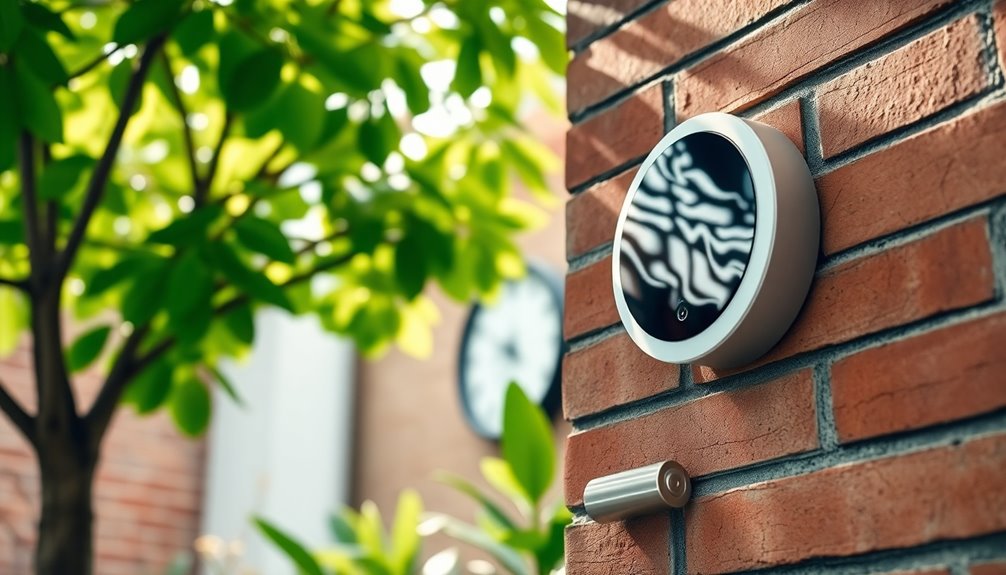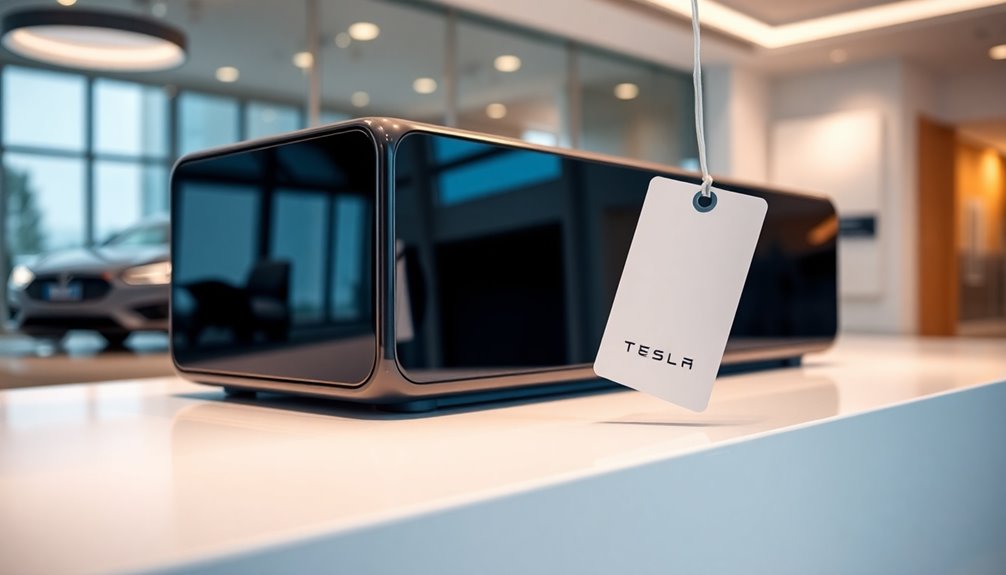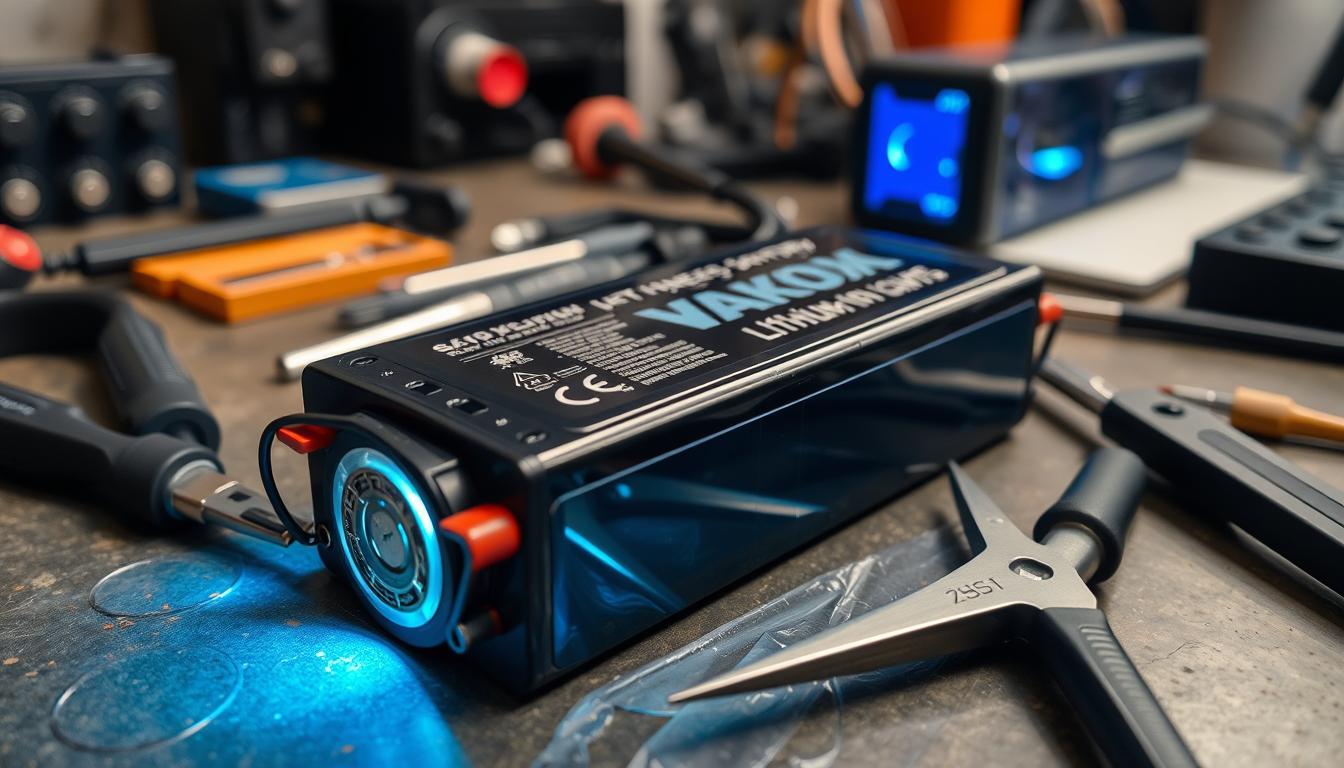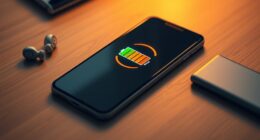Ring batteries usually last around 6 to 12 months. However, factors like heavy traffic, poor Wi-Fi, and extreme weather can shorten their lifespan to just 3 to 6 months. To extend your battery life, lower motion sensitivity and maintain a strong Wi-Fi connection. Position your devices wisely, away from heat sources and frequent movement. You can also create schedules for motion detection to optimize their performance. Additionally, consider solar chargers or hardwiring for a steady power supply. There are plenty of tips and tricks to guarantee your devices stay powered longer, helping you enhance your smart home experience.
Key Takeaways
- Ring batteries typically last 6-12 months, but can decrease to 3-6 months in high-traffic areas.
- Cold weather and frequent motion alerts can significantly accelerate battery drain.
- Optimizing motion sensitivity and zones can minimize unnecessary alerts and conserve battery life.
- Ensuring a strong Wi-Fi connection reduces power consumption by preventing reconnections.
- Consider solar chargers or hardwiring to maintain continuous power and eliminate battery replacements.
Battery Life Overview
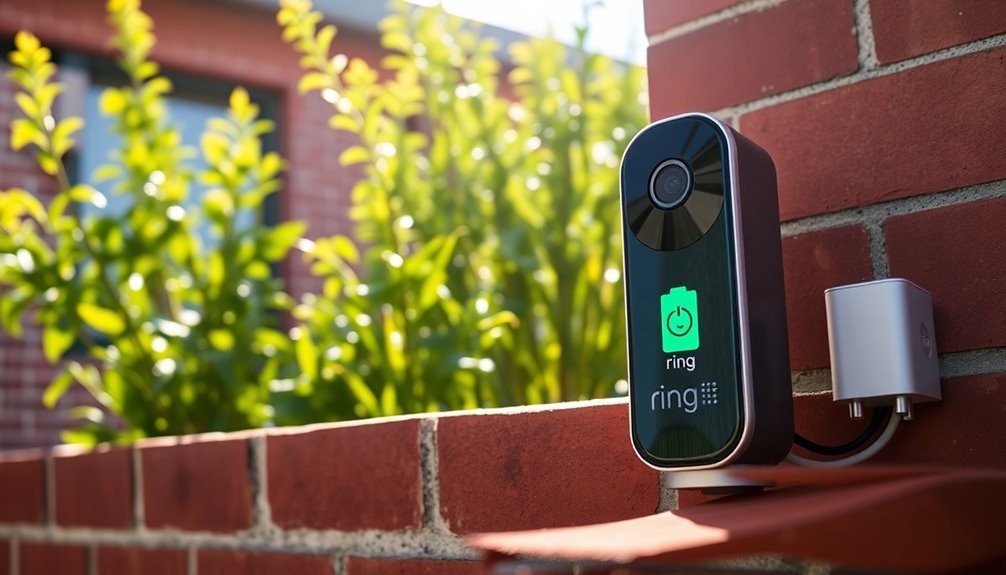
When you install a Ring Doorbell, you'll likely want to know how long the battery will last before needing a recharge.
Typically, Ring Doorbell batteries last between 6 to 12 months per charge, depending on your usage and environmental conditions. In high-traffic areas, though, you might see an average battery life of just 3 to 6 months due to frequent motion detection and the Live View feature.
To extend battery life, consider monitoring your battery status through the Ring app, which alerts you when it's time to recharge the battery.
Newer models have improved battery-saving capabilities, allowing them to outlast older versions. Keeping an eye on these factors will help you maximize the performance of your existing doorbell.
Factors Affecting Battery Life
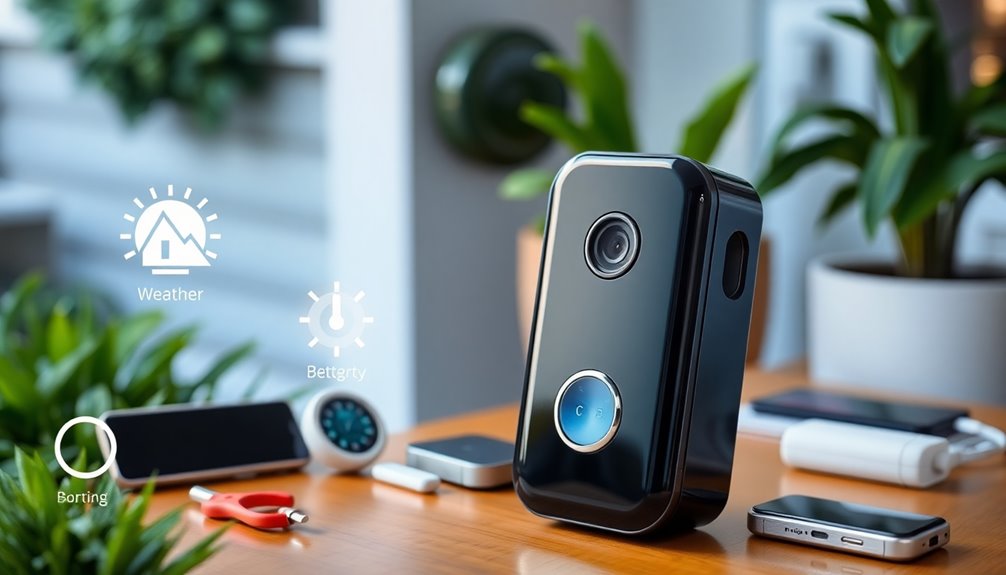
Your Ring device's battery life can vary considerably based on weather conditions and your usage patterns.
Cold temperatures can drain your battery faster, while frequent motion alerts and Live View will consume more energy.
Weather Conditions Impact
Extreme weather can drastically impact the battery life of your Ring devices, often cutting down their performance and usage time. Cold weather, particularly below 41˚F/5˚C, can lead to accelerated battery drain and diminished functionality. While Ring batteries may regain performance once warmed, adverse environmental conditions can force devices into Sleep Mode, protecting battery life but limiting active use. To optimize performance, consider these adjustments:
| Weather Condition | Effect on Battery Life | Mitigation Strategies |
|---|---|---|
| Extreme Cold | Reduced functionality | Monitor temperatures, adjust settings |
| Extreme Heat | Increased energy consumption | Position in shade, reduce brightness |
| Rain/Snow | Battery drain | Use protective enclosures |
| High Humidity | Performance issues | maintain proper ventilation |
| Wind | Potential damage | Secure device positioning |
Usage Patterns Influence
Although it might seem straightforward, the way you use your Ring devices can considerably affect their battery life. Frequent motion detection events can drain your battery much faster, especially with high sensitivity settings.
If you live in extreme environmental conditions, like cold weather, you might notice reduced battery efficiency. A poor Wi-Fi signal forces your device to work harder, consuming more power for reconnections.
Additionally, using the Live View feature often leads to rapid battery drain due to its high energy consumption. Extended video recording times can further shorten battery lifespan.
To maximize battery life, consider adjusting your usage patterns, such as reducing motion sensitivity or limiting Live View sessions, and recharge your device proactively.
Tips for Extending Battery Life
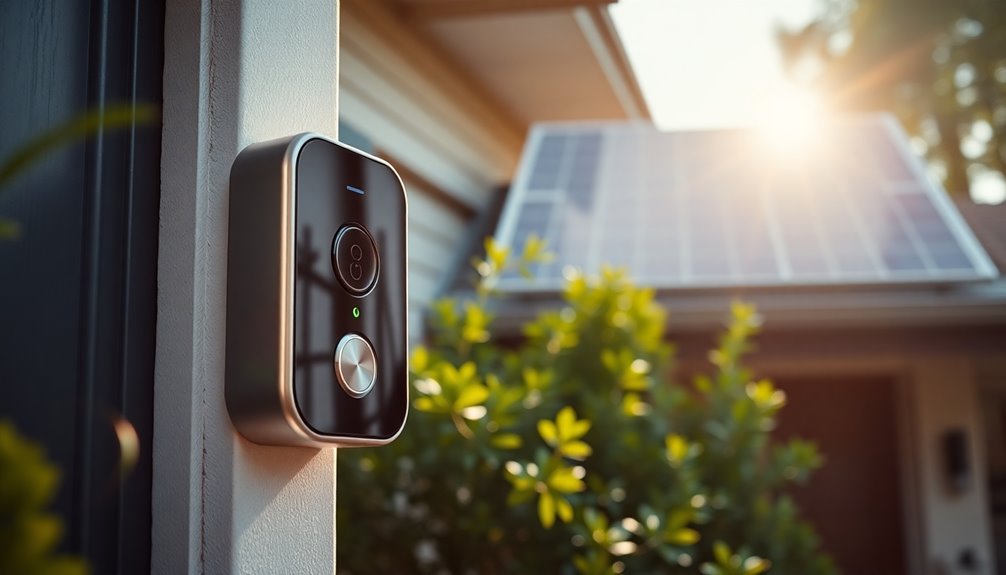
To keep your Ring doorbell running longer, start by optimizing the motion settings.
Lowering the sensitivity can help reduce unnecessary alerts that drain battery life.
Also, maintaining a strong Wi-Fi connection guarantees your device operates efficiently without using extra power.
Optimize Motion Settings
Optimizing your Ring device's motion settings can greatly extend its battery life, especially if you make a few simple adjustments.
Here are some tips to help you reduce battery drain:
- Lower motion sensitivity: Set it to 0 or 1 to minimize unnecessary triggers.
- Position wisely: Place your device away from heat sources and moving objects to reduce false alerts and conserve battery power.
- Limit motion detection: Enable it only on essential lights and during key hours to prevent excessive battery consumption.
- Create schedules: Align linked devices with natural darkness to avoid unnecessary daytime activation and minimize alerts.
Maintain Strong Wi-Fi
Keeping your Ring device powered up involves more than just adjusting motion settings; a strong Wi-Fi connection plays a significant role in battery life as well. A weak signal causes your Ring devices to constantly reconnect, which drains battery power quickly.
To guarantee peak battery life, consider relocating your router closer to your Ring device or using Wi-Fi extenders to eliminate dead spots. Regularly check the Wi-Fi signal strength in the Ring app; if it's low, you may need adjustments.
Connecting your Ring to the 2.4GHz band rather than the 5GHz band can also improve range and stability. Finally, minimizing interference from microwaves and cordless phones helps maintain a strong Wi-Fi connection, extending your Ring battery life. Additionally, maintaining good indoor air quality can enhance overall device performance, as air purifiers can reduce pollutants that may interfere with signal clarity.
Optimizing Motion Detection Settings
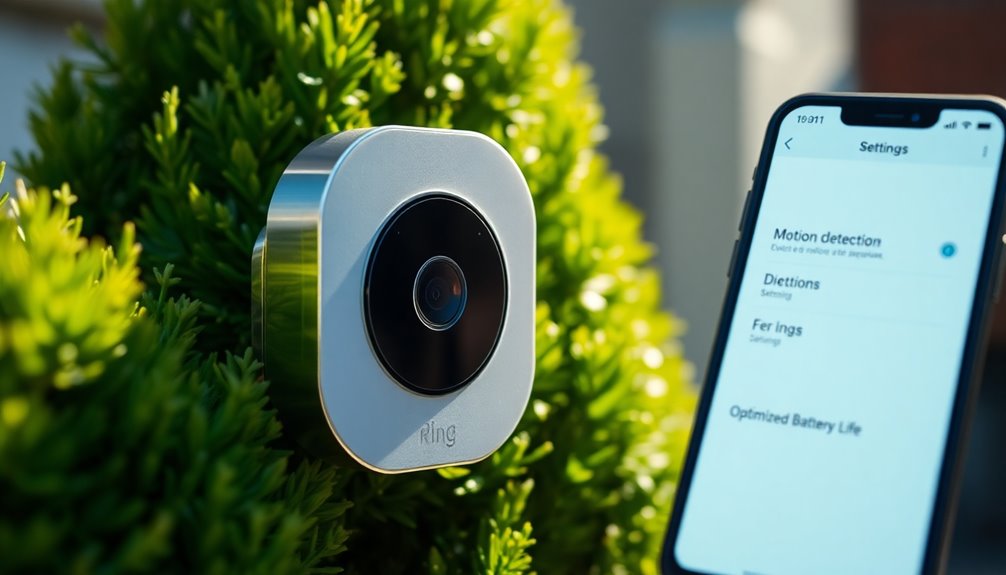
While you want to keep your Ring device alert and responsive, fine-tuning your motion detection settings can greatly enhance battery life.
Here are some effective tips to optimize energy consumption:
- Set motion sensitivity to a low level (0 or 1) to minimize unnecessary triggers and conserve battery.
- Adjust motion zones to focus detection on important areas, excluding high-traffic zones to reduce battery drain.
- Disable motion alerts during peak activity hours to prevent excessive notifications and low battery notifications.
- Link devices thoughtfully to avoid excessive activation from linked motion events.
Regularly review and update these settings based on seasonal changes in daylight and environmental conditions to guarantee maximum efficiency and extend your battery life.
Managing Daytime Activation
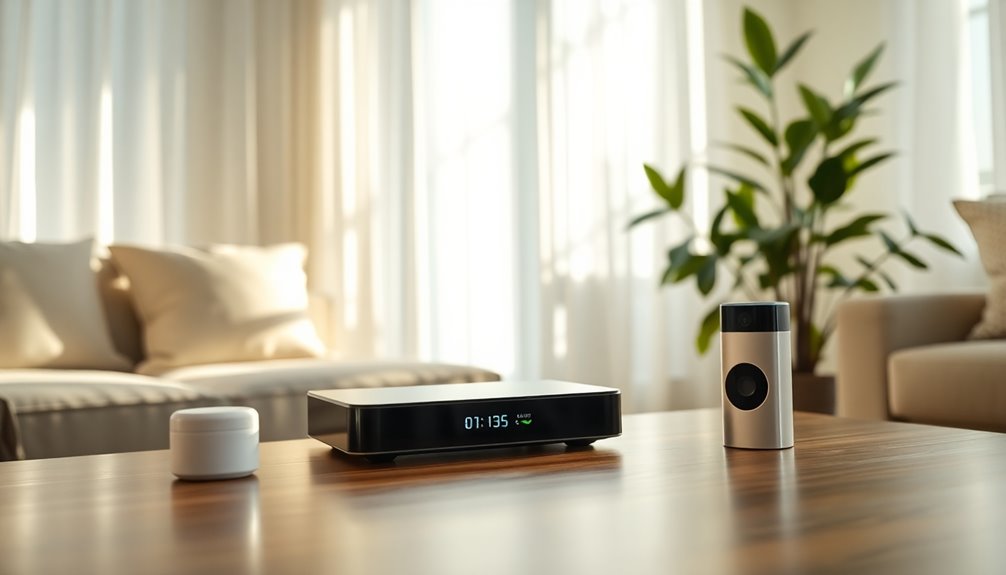
Managing daytime activation effectively can considerably enhance your Ring device's battery life.
Start by adjusting your light sensor settings to a low sensitivity level (0 or 1) to prevent unnecessary activation and conserve battery.
Create time schedules for linked devices that mimic nighttime hours, ensuring they only activate when needed.
Regularly update these settings based on seasonal changes in daylight to optimize performance and reduce energy consumption.
Additionally, monitor and fine-tune your motion detection settings to minimize false alerts and unnecessary battery drain during busy daytime hours.
Being aware of environmental factors, like increased foot traffic or nearby movement, will help you maintain efficient battery usage throughout the day.
These adjustments can markedly prolong your Ring device's battery life.
Additional Power Options
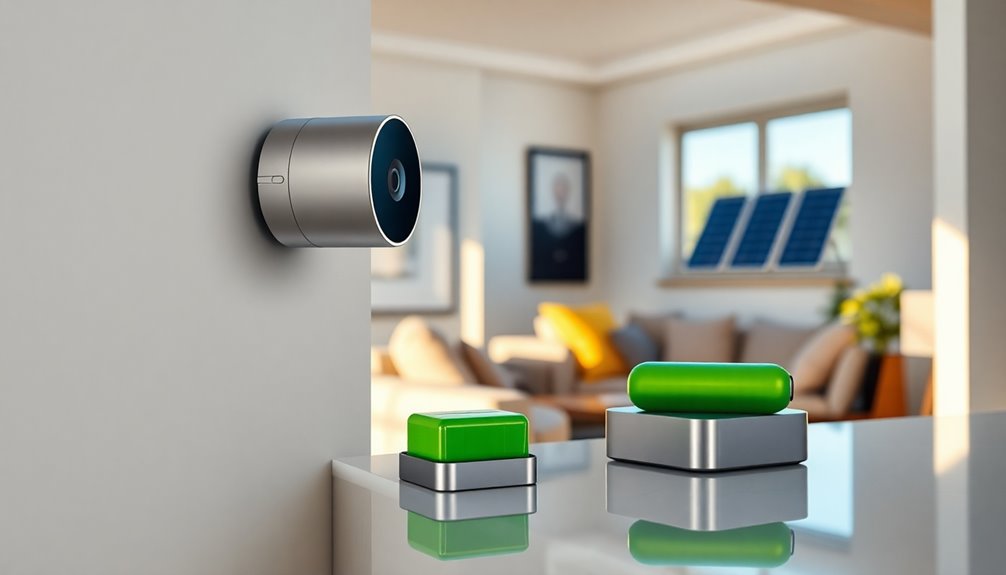
To enhance your Ring device's power options, consider integrating additional solutions that can help maintain battery life effectively. Here are some options to explore:
- Solar Charger: If you have sunlight, a solar charger can keep your Ring Doorbell Battery charged without frequent recharging.
- Hardwiring: Connect your Ring doorbell to an existing system for a constant power supply, eliminating battery replacements altogether.
- Rechargeable Lithium-Ion Batteries: Use high-quality batteries designed for smart devices to extend the battery life between charges.
- Compatible Battery Packs: Keep extra packs handy for quick swaps during charging, minimizing downtime while ensuring your security remains uninterrupted.
Frequently Asked Questions
What Is the Lifespan of a Ring Battery?
The lifespan of a Ring battery usually ranges from 6 to 12 months, depending on how you use it.
If you frequently activate motion detection or use the Live View feature, you might find your battery drains faster.
Environmental factors like extreme temperatures can also affect performance.
To keep track, regularly check your battery status through the Ring app, so you won't be caught off guard by unexpected outages.
How to Extend Ring Battery Life?
Did you know that reducing motion sensitivity can save up to 50% more battery life?
To extend your Ring battery life, lower the motion sensitivity settings to 0 or 1. Set the Group Auto Shutoff time to 30 seconds and consider using a Solar Charger if possible.
Regularly update your motion detection settings with seasonal changes and disable motion alerts during busy times to conserve energy efficiently.
These simple steps can make a big difference!
Why Is My Ring Doorbell Battery Dying so Quickly?
If your Ring Doorbell battery's dying quickly, it could be due to a few factors.
High motion activity in your area might be triggering frequent alerts, draining the battery faster.
Extreme weather, especially cold temperatures, can also impact performance.
Additionally, a weak Wi-Fi connection forces your doorbell to use more energy to stay connected.
Finally, using Live View too often can rapidly deplete battery life, so try to limit that feature.
How Often Does a Ring Doorbell Battery Need to Be Charged?
You'll need to charge your Ring Doorbell battery every 6 to 12 months, but this can vary.
If you live in a high-traffic area and frequently use features like Live View, you might find yourself recharging every 3 to 6 months.
It's essential to keep an eye on the battery status through the Ring app, as it'll alert you when it's low, ensuring you stay connected without interruptions.
Conclusion
In summary, understanding your ring battery's lifespan can greatly enhance your smart home experience. Did you know that, on average, a ring battery lasts between six months to a year, depending on usage? By implementing a few simple tips, like optimizing motion detection settings and managing daytime activation, you can easily extend this lifespan. Taking these steps not only saves you time and money but also guarantees your home remains secure and connected all year round.

